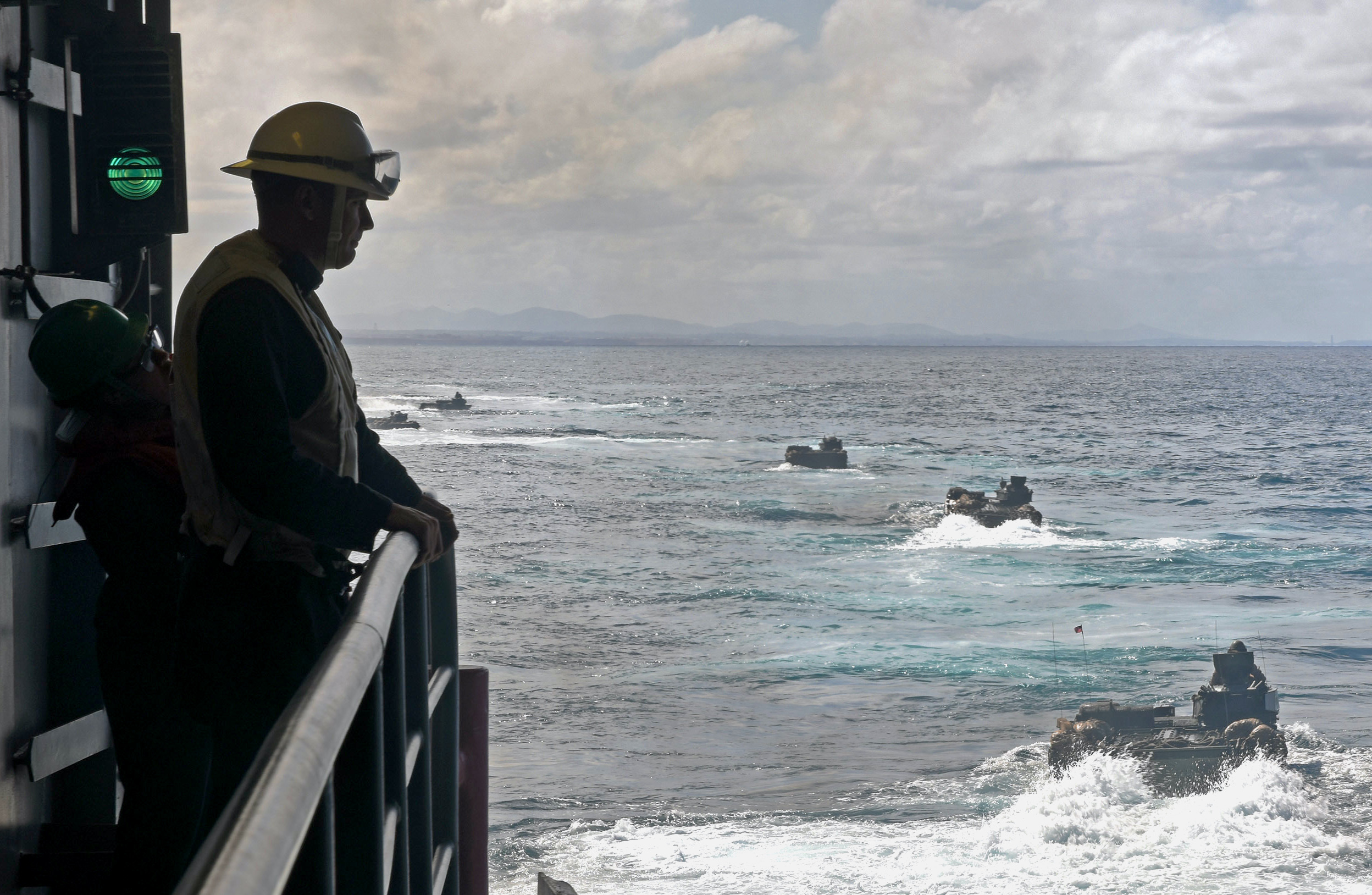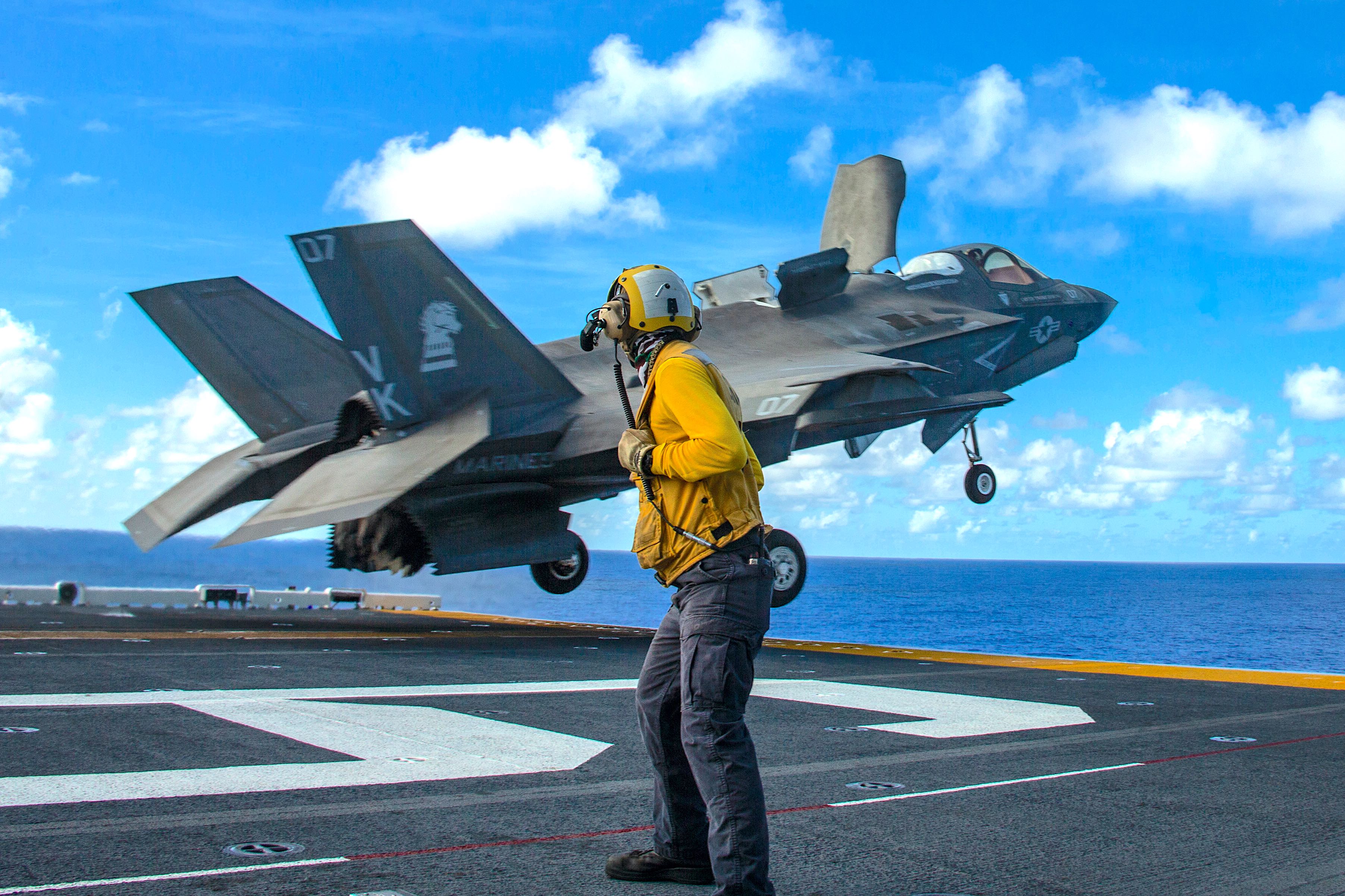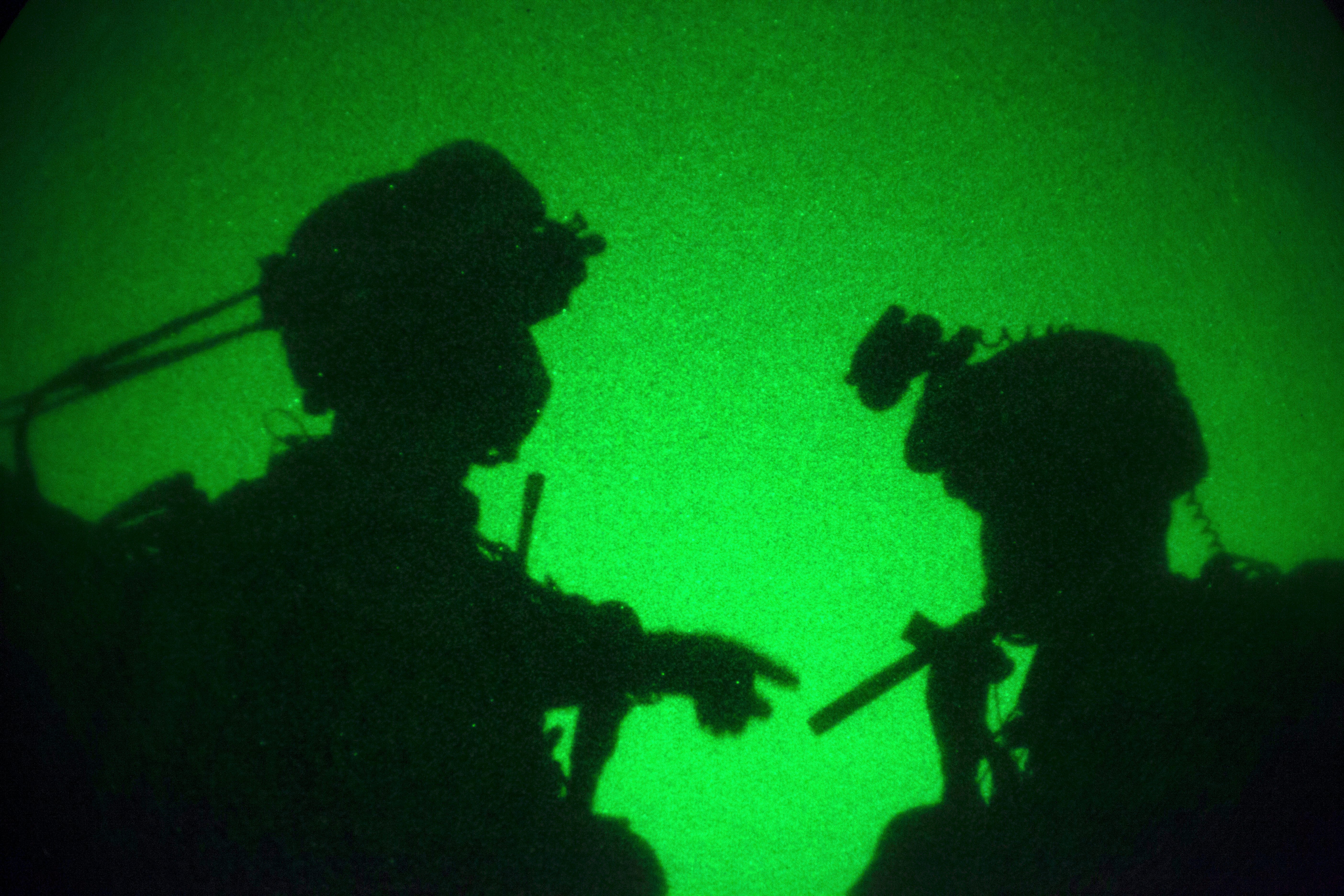
The Navy and Marine Corps are further putting their money and their effort towards greater naval integration, as the services work together on tactics for blue-green operations and a spending plan that supports those new tactics.
After spending much of 2019 conducting an Integrated Naval Force Structure Assessment meant to draw out a future force, and then rolling that effort into the larger Pentagon-level Future Naval Force Study this year, leaders feel comfortable that they know what the Navy-Marine Corps integration will look like at the service level, Deputy Chief of Naval Operations for Warfighting Requirements and Capabilities Vice Adm. Jim Kilby said at a virtual event co-hosted by the Center for Strategic and International Studies and the U.S. Naval Institute on Thursday.
The next steps are translating that vision into tactics and procedures and buying the gear that will best support that new way of operating.
Kilby said the naval warfare doctrine has been refreshed – with the chief of naval operations, commandant of the Marine Corps and commandant of the Coast Guard signing off on that new publication in April – and that a tri-service maritime strategy would be signed out soon.
But, he said, “the work to be done really is [tactics, techniques and procedures] at the unit level to do that connectivity we’re talking about” in naval integration. New concepts – particularly Expeditionary Advance Base Operations (EABO) – will rely heavily on small units on the ground and small ships at sea sharing all their sensing and tracking data back to a common network, so that the right shooter in the right place at the right time can take advantage. Working out the kinks in that plan will likely require new TTPs as well as new gear.
For example, Kilby said, “if I could use the track data from a G/ATOR radar, how would I do that and practice that?” The Marine Corps has fielded its AN/TPS-80 Ground/Air Task Oriented Radar (G/ATOR), and changes are already in the works that will help connect the radar to ships at sea.
“When we try to close that fire control loop using data from the G/ATOR radar so a ship can shoot … to me those are the TTP things that need to happen,” he said.
He likened this effort to the early days of Naval Integrated Fire Control-Counter Air (NIFC-CA), when operators were trying to figure out exactly how they could connect various nodes in the fire control loop and what information could be shared between whom. Kilby said it was individual operators taking it upon themselves to try things out and then share lessons learned that could be scaled up to the fleet level.

Kilby said that kind of innovation at the operator level has already been taking place, citing an example from a couple years ago of sailors and Marines in Japan working to share data from a Marine F-35B Joint Strike Fighter to a Navy Baseline 9 Aegis destroyer.
Deputy Commandant of the Marine Corps for Combat Development and Integration Lt. Gen. Eric Smith said during the same event that he was commanding general of III Marine Expeditionary Force during that F-35/DDG experiment and said the desire is there at the unit level to innovate, and leadership higher up has to let them take the initiative in experimenting and developing tactics.
At higher levels, he said, leadership needs to be focused on what this new way of operating will mean for command and control relationships.
Earlier this month, U.S. 7th Fleet Commander Vice Adm. Bill Merz and III MEF Commanding General Lt. Gen. Stacy Clardy and their staffs conducted a command post exercise as part of Exercise Noble Fury 21, meant to bolster naval integration.
After that ended, Smith said, Merz headed to Marine Corps Base Quantico in Virginia with the deputy commanding generals of III MEF and Fleet Marine Forces Pacific to conduct a wargame called Naval Services Games 20.
“It was focused on the C2, the different relationships that may or may not work,” Smith said, calling the weeklong event grueling.
“We had the players in the room for a week. It was brutal, the schedule was brutal, exercising these C2 relationships to see what works. It’s actually being tested” and wargamed now and will be put into live exercises in the future to ensure the Navy and Marine Corps team can maintain the right command and control structure as units aggregate and disaggregate, as Navy supports Marine Corps and then the Marine Corps supports the Navy, and so on.

As the services refine their concepts and tactics, they will have to adjust their acquisition to support those changes, too.
The Marine Corps has led the way in overhauling its forces, releasing a Force Design earlier this year that calls for divesting legacy equipment to free up funds for new kit in support of EABO that will allow the Marines to pack a lethal punch with a light footprint. Kilby said that, though the Navy has always been in the driver’s seat developing the shipbuilding plan, the fact that the two services completed the INFSA together and have agreed to make shipbuilding changes in support of Marine Corps ideas is a big step for naval integration.
“As we integrate our forces and look to marry up what investments each are making, I think that’s powerful. The Navy is now working with Eric’s office and our analysis divisions to respond to Force Design. What does that mean for the Navy to respond to the commandant’s moves?” Kilby said.
Key among those investments will be a light amphibious warship and a smaller logistics ship to support the movement of small Marine units around the littorals, allowing them to better blend in with local shipping traffic and make it harder for an adversary to target them as they maneuver.
Smith said the two services were committed to writing a budget based around “what’s needed, as opposed to, I built this, what can you do with it? We are talking about a truly integrated force development effort so that we are working in tandem to build a [joint force maritime component command] that that combatant commander wants, needs, and can most effectively use for whatever [operation] plan, whatever crisis comes up.”
Smith said this kind of integrated force – integrated not just in operations but also in budgeting and program development – was the most effective way to create naval power amid flat or declining budgets. He also said it was the best way to move forward given the anticipated threat environment.
“Naval integration and where we are going as a force, it’s based on the threat. The pacing threat,” he said.
“If anyone questions why we are doing this, Jim and I are reading, along with the other deputy CNOs, deputy commandants, reading the daily intelligence that requires you to move in this direction. It is clear as the nose on your face.”





